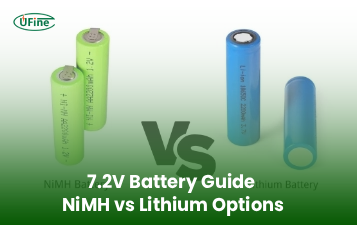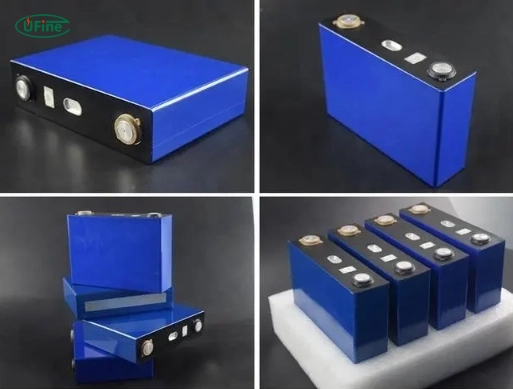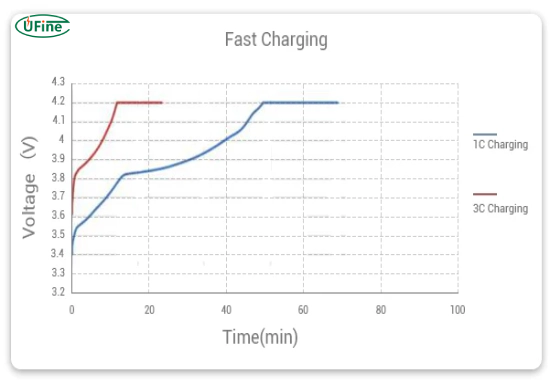
- Part 1. What is an amped lithium battery and how is it built differently?
- Part 2. Why is the energy efficiency of amped lithium batteries superior?
- Part 3. How fast can you charge an amped lithium battery?
- Part 4. How long do amped lithium batteries last compared to others?
- Part 5. What makes amped lithium batteries safer than other options?
- Part 6. How does weight and size affect portability and installation?
- Part 7. Are amped lithium batteries cost-effective in the long run?
- Part 8. How do temperature extremes affect amped lithium battery performance?
- Part 9. Why are amped lithium batteries ideal for solar power storage systems?
- Part 10. Can you directly replace other batteries with an amped lithium battery?
- Part 11. FAQs about amped lithium battery and regular lithium battery
What makes an amped lithium battery different from traditional batteries? The answer lies in its advanced performance, longer lifespan, faster charging, and smarter energy management. Amped lithium batteries are becoming the go-to solution for RV users, solar power systems, marine applications, and off-grid energy setups.
Compared to lead-acid and even standard lithium-ion batteries, an amped lithium battery delivers higher efficiency, superior safety, and unmatched reliability. This article gives you a detailed, side-by-side comparison to help you understand why these batteries are gaining popularity fast.
Part 1. What is an amped lithium battery and how is it built differently?
An amped lithium battery is a high-performance lithium iron phosphate (LiFePO4) battery with enhanced internal architecture and smart electronics. What sets it apart is the integrated battery management system (BMS) that actively monitors temperature, voltage, and current.
These batteries are built using premium-grade materials and intelligent circuitry to maximize energy output and maintain safety. They are designed to be plug-and-play for many systems, including RVs, boats, solar storage, and emergency backup power.
Key Components of an Amped Lithium Battery:
- Lithium iron phosphate cells for thermal stability
- Smart BMS for real-time monitoring and protection
- High-quality terminals and casing for durability
- Built-in Bluetooth or monitoring display in some models
Part 2. Why is the energy efficiency of amped lithium batteries superior?
Amped lithium batteries are known for their exceptional energy efficiency, reaching up to 98 percent round-trip efficiency. This means nearly all the energy you put into the battery is available for use.
How does this improve performance?
Unlike lead-acid batteries that waste energy as heat, amped lithium batteries keep energy losses to a minimum. They also maintain a flat voltage curve, which allows your electronics and appliances to run at consistent power levels until the battery is nearly empty.
Summary of energy efficiency benefits:
- Less energy wasted
- Stable voltage output
- Improved performance for high-draw devices
- Better use of solar or generator input
Part 3. How fast can you charge an amped lithium battery?
Amped lithium batteries charge significantly faster than other battery types. Thanks to their low internal resistance and smart charging features, they can handle high current input without overheating or degrading.
| Battery Type | Typical Charge Time |
|---|---|
| Lead-acid | 8 to 12 hours |
| Standard lithium | 4 to 6 hours |
| Amped lithium | 1.5 to 3 hours |
If paired with a proper lithium-compatible charger, these batteries can charge to full capacity in a fraction of the time required by older technologies.
Charging highlights:
- Fast recharge means less downtime
- Supports solar, alternator, and AC charging
- Accepts high input current safely
- Ideal for mobile and off-grid use
Part 4. How long do amped lithium batteries last compared to others?
One of the biggest advantages of amped lithium batteries is their long lifespan. While traditional lead-acid batteries may only last a couple of years, amped lithium batteries can last a decade or more.
Battery Cycle Life Comparison:
- Lead-acid: 300 to 500 cycles
- Standard lithium-ion: 1000 to 3000 cycles
- Amped lithium (LiFePO4): 3000 to 6000+ cycles
Even with daily use, many users report over 10 years of reliable performance. This makes them an excellent long-term investment.
Part 5. What makes amped lithium batteries safer than other options?
Safety is a major concern when it comes to battery technology. Amped lithium batteries are built with multiple layers of safety features that protect both the battery and the user.
These batteries use LiFePO4 chemistry, which is inherently non-combustible and thermally stable. This makes them much less likely to overheat, catch fire, or explode than other lithium variants.
Built-in safety mechanisms include:
- Over-voltage protection
- Low voltage cutoff
- Overcurrent protection
- Temperature sensors
- Short-circuit protection
The smart BMS plays a critical role by continuously monitoring the battery’s health and shutting down operations during unsafe conditions.
Part 6. How does weight and size affect portability and installation?
Amped lithium batteries are significantly lighter and more compact than lead-acid alternatives. This makes them ideal for applications where space and weight are limited.
| Battery Type | 100Ah Weight Estimate |
|---|---|
| Lead-acid | 55 to 65 lbs |
| Standard lithium | 28 to 32 lbs |
| Amped lithium | 24 to 30 lbs |
Why less weight matters:
- Easier to install and move
- Reduces vehicle or vessel weight
- Improves fuel efficiency
- Frees up space for other gear
Part 7. Are amped lithium batteries cost-effective in the long run?
Although amped lithium batteries come with a higher up-front cost, they are more economical over time. Thanks to their long lifespan and high efficiency, they require fewer replacements and lower maintenance, saving money in the long term.
| Battery Type | Initial Cost | Lifespan | Long-Term Value |
|---|---|---|---|
| Lead-acid | Low | 2–3 years | High Replacement Cost |
| Standard lithium | Medium | 5–7 years | Moderate |
| Amped lithium | High | 10+ years | Excellent |
Additional savings:
- No need for ventilation systems
- No acid leaks or corrosion issues
- Fewer replacements mean lower labor costs
Part 8. How do temperature extremes affect amped lithium battery performance?
Amped lithium batteries are built to operate in a wide range of temperatures. Many models include low-temperature charging protection or even built-in heating elements, allowing them to function reliably in cold climates.
Temperature Performance Range:
- Operating range: -4°F to 140°F
- Charging range: 32°F to 113°F (varies by model)
- Heated models: Can safely charge below freezing
This makes them perfect for campers, adventurers, or off-grid homes in areas with harsh winters or extreme heat.
Part 9. Why are amped lithium batteries ideal for solar power storage systems?
Solar energy systems require batteries that can store and release power efficiently, especially when sunlight is inconsistent. Amped lithium batteries are an excellent match for solar setups because they:
- Charge quickly during daylight hours
- Store more usable energy
- Discharge deeply without damage
- Have minimal energy loss
These batteries help maximize every kilowatt your solar panels produce, offering a reliable backup during nighttime or cloudy days.
Part 10. Can you directly replace other batteries with an amped lithium battery?
Yes, most amped lithium batteries are designed to be drop-in replacements for lead-acid models. They come in standard sizes and voltages, making the switch simple for most users.
Things to check before replacing:
- Charger compatibility
- System voltage and current ratings
- Inverter or controller settings
Once installed, you’ll enjoy improved performance, less maintenance, and faster charging without needing to overhaul your entire system.
Part 11. FAQs about amped lithium battery and regular lithium battery
What is the main difference between an amped lithium battery and a regular lithium battery?
An amped lithium battery includes advanced electronics and a smart BMS, offering better safety, longer lifespan, and faster charging compared to a regular lithium battery.
Can I overcharge an amped lithium battery?
No. The built-in battery management system protects against overcharging by automatically regulating voltage and current during the charging process.
Are amped lithium batteries safe to use indoors?
Yes. These batteries are non-toxic, leak-free, and emit no harmful gases, making them safe for indoor use in RVs, cabins, or home backup systems.
How do I maintain an amped lithium battery?
Maintenance is minimal. Just ensure the battery is kept at recommended temperatures and use a charger designed for lithium batteries to prolong its life.
Can I use an amped lithium battery with my existing solar setup?
Yes. As long as your charge controller and inverter are lithium-compatible, you can upgrade without changing your entire system.
Related Tags:
More Articles

NiMH vs Lithium 7.2V Battery and Charger: Which Is Better?
Compare 7.2V NiMH vs Lithium batteries and chargers in 2025. Learn runtime, weight, charging, lifespan, and cost to choose the best for your device.
How to Choose the Right 7.2V Battery and Charger for Your Device?
Learn how to choose the right 7.2V battery and charger for optimal performance, safety, and longevity across RC, tools, medical, and industrial devices.
Big Square Battery Safety Standards You Must Know
Learn key safety standards for big square batteries to avoid fire risks, shipping delays, and compliance issues in EV, industrial, and energy storage projects.
Big Square Battery Applications in Solar & Industrial Equipment
Big square batteries deliver high capacity, stable output, and long life for solar, industrial, and backup power. Explore key uses and advantages.
Big Square Battery vs Cylindrical Battery: Complete 2025 Guide for EVs, ESS & Industrial Devices
Choosing the right battery is key for designers and engineers. Compare big square vs cylindrical batteries to find the best fit for your application.




